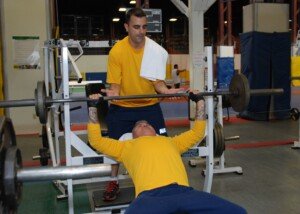A leading aortic disease surgeon explains about aortic aneurysm and high intensity interval training cardio.
If you’ve been diagnosed with an aortic aneurysm and have always been a fitness enthusiast, you’re likely wondering if high intensity interval training (HIIT) is safe.
Medical literature has very scant information on the safety of cardio for people with aortic aneurysm.
Apparently, there have been no studies on the risk of aortic aneurysm dissection in people who engage in high intensity interval training.

“The goal is avoid high stress on the aortic root,” says Allan S. Stewart, MD, a cardiothoracic surgeon at HCA Florida Mercy Hospital in Coconut Grove.
“To this end, the goal is to minimize the adrenaline rush.
“When looking at blood pressure during cardio, the biggest impact is in the first 10-15 minutes of exercise.
“To ameliorate that stress, I tell my patients to ramp up slowly. More specifically, I advise that runners start with a 15 minute mile and then gradually start to increase the speed.
“Cyclists similarly, should begin with a 12-14 mph speed for 15 minutes on flat ground before taking a steep hill.
“There is little in the way of hard scientific evidence to support these recommendations, but the goal is to allow for the body to acclimate to intensity.
“I do not advise anyone with an aneurysm meeting the criteria for repair, to do level 7 or above in intensity.”
In short, a person whose aortic aneurysm is less than 5 cm can safely do high intensity interval training – but the following criteria must be met:
The patient must also have a tri-leaflet aortic valve; must not have a connective tissue disorder; and must not be experiencing symptoms from the aortic aneurysm!
So does this mean that it truly is safe for a person with aortic aneurysm, to engage in high intensity interval training?
Here is what another aortic disease surgeon, Dr. Eric Isselbacher, says in a 2005 issue of the journal Circulation:
Aerobic exercise is generally safe, provided the patient does not have a hypertensive response to exercise.
Consequently, should a patient wish to engage in vigorous aerobic exercise (eg, running or biking), it is prudent to obtain an exercise treadmill test—on β-blockers and/or other baseline antihypertensive medications—to assess the physiological response to exercise and ensure that the systolic blood pressure does not rise above 180 mm Hg.
Minimizing blood pressure response will minimize stress on the aortic root.
According to Dr. Stewart, it can be safe for one with aortic aneurysm (not meeting repair criteria) to reach an intensity level of 7 and above – out of an intensity scale of zero to 10.
Ten means your fullest effort over a 30-second or less period of time.
Think of running up a hill as fast as possible. Level 10 high intensity interval training workouts can also involve pedaling, stepping and jumping.

Level 10 leaves you feeling battered and unable to talk.
Level 9 also produces compete breathlessness within 30 seconds, but a tiny portion of you feels you could have gone a wee bit faster or harder.
So how can high intensity interval training be safe for someone with aortic aneurysm?
Assuming that the patient meets the criteria mentioned previously, does not have a hypertensive response to cardio, and slowly ramps up, as Dr. Stewart advises, high intensity interval training will not strain the aortic root in one who has an aneurysm.
Don’t let the extreme tachycardia (increased heart rate), that follows a high intensity interval training segment, be misleading.
Panting forcefully to recover oxygen levels will not pressurize the weakened vessel wall of someone with aortic aneurysm.
The stress of high intensity interval training is on the lungs.
Dr. Stewart adds, “Sustained cardio is fine. It is not the length of the exercise, but how it commences that causes the difficulty.”
So how should one with aortic aneurysm commence high intensity interval training?
Do a 10-15-minute, slow ramp-up. Using a treadmill as an example, suppose your HIIT maximum speed is 10 mph (for 30 seconds), alternating with slow walking.
You will do a very brief run at 5, 6, 7, 8 and 9 mph preceding it – after you’ve warmed yourself up for 10-15 minutes with walking that escalates to a 4 mph pace.
To minimize a blood pressure spike, each submaximal speed interval will be preceded by a 10-second, 5 mph jog. E.g., when it’s time to run 8 mph, run first for 10 seconds at 5 mph, then run 15 seconds at 8 mph.
That 5 mph for 10 seconds will act as a bridge between the recovery walks and the speed intervals.
When you get to 10 mph, add another bridge: After the 10-second, 5 mph jog, run 5 seconds at 8 mph, and then jump to 10 mph for no longer than 30 seconds. After concluding any speed segment, always slow down gradually!
Yes, this is a lot of fussing around with the treadmill’s controls, not to mention the added burden of those bridges on your max efforts, but if you have a thoracic aortic aneurysm and want to safely do high intensity interval training, you must take precautions.











































